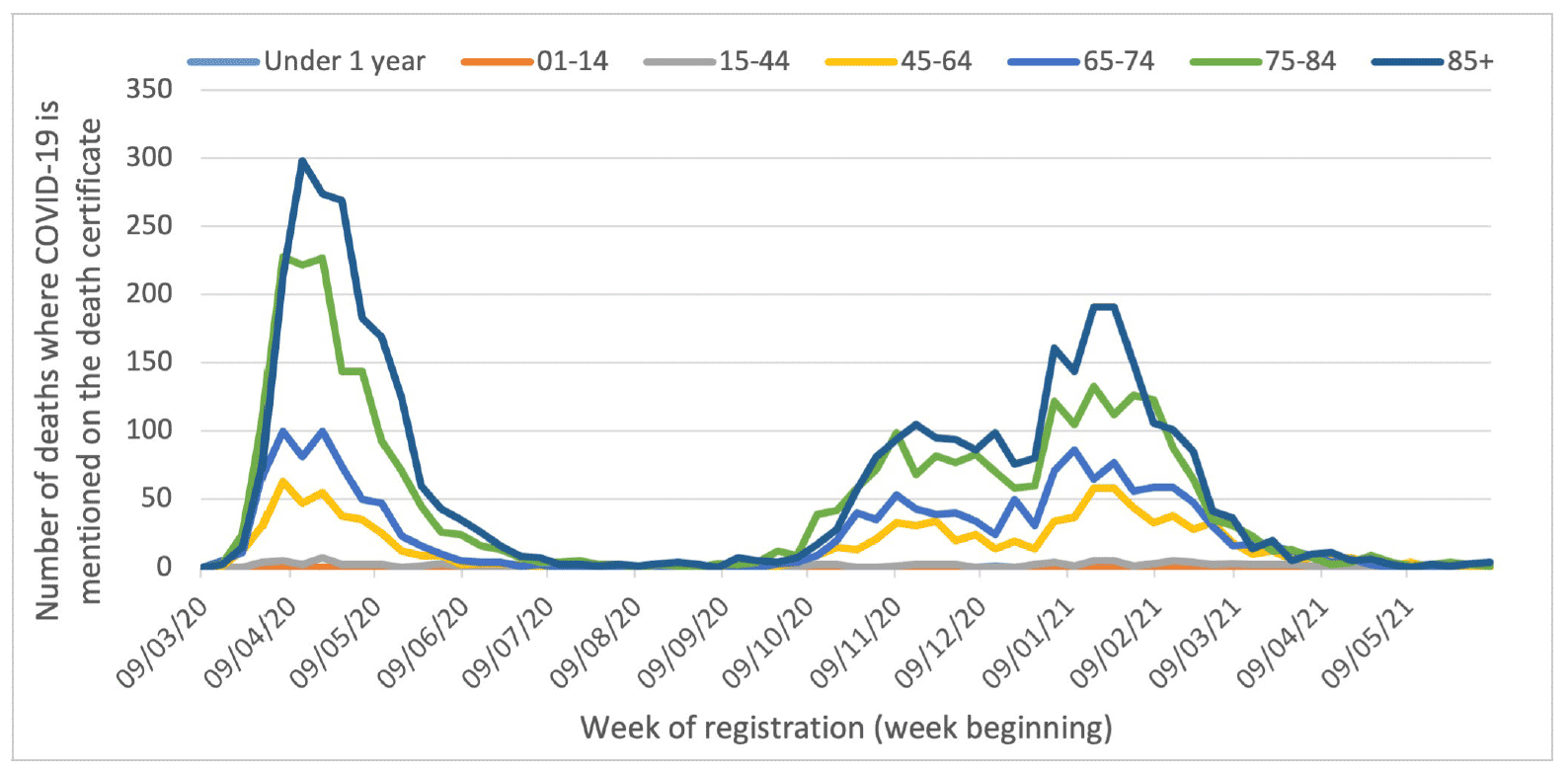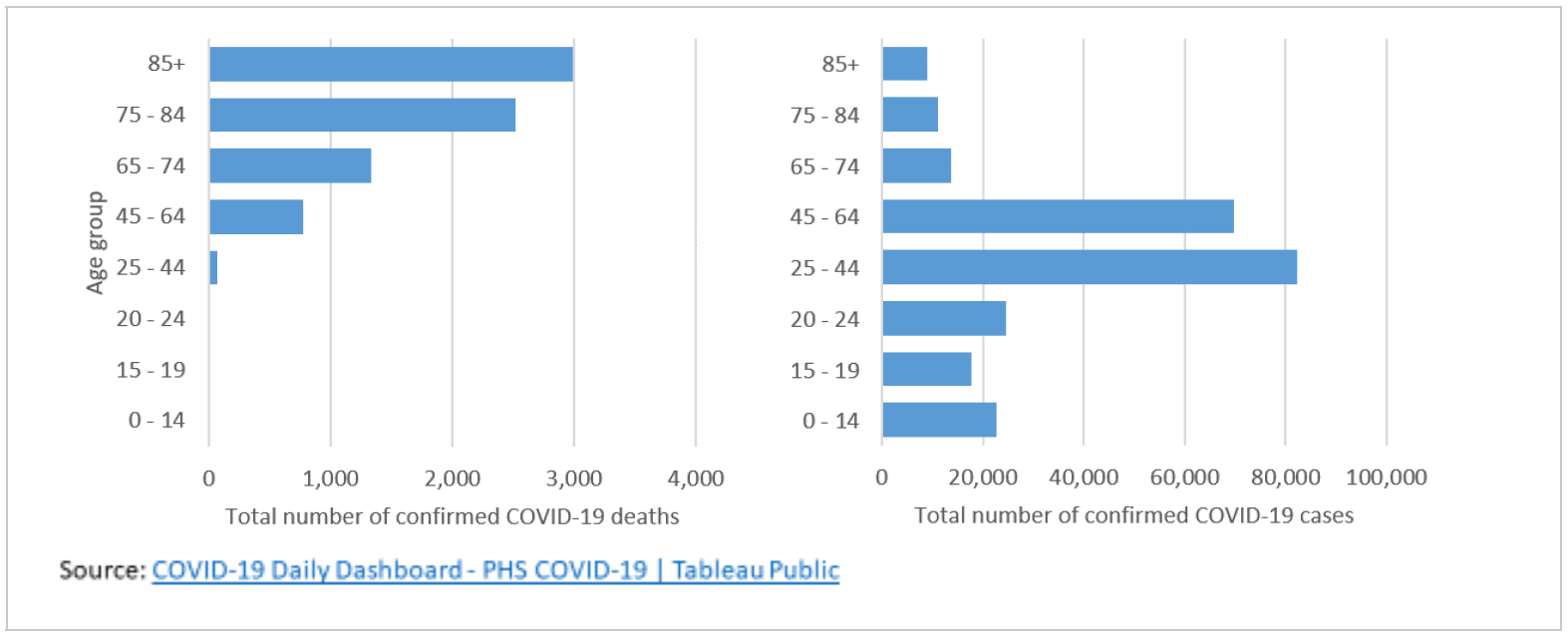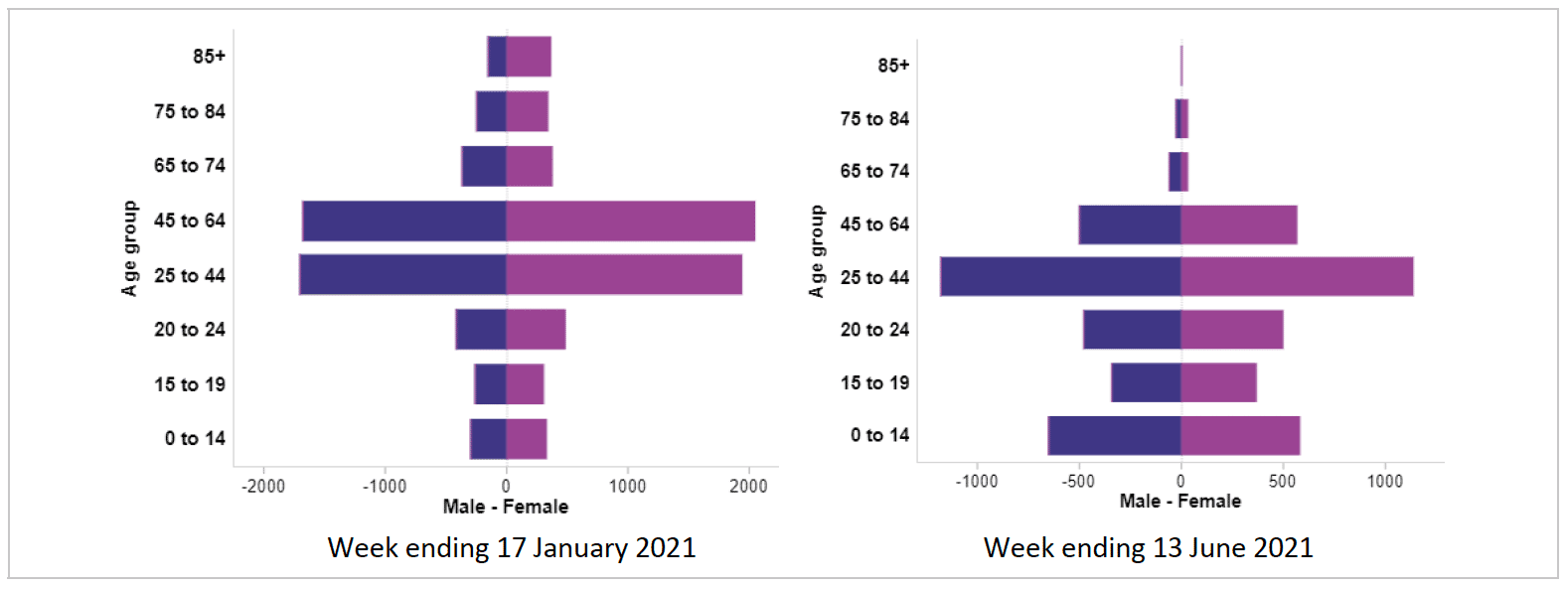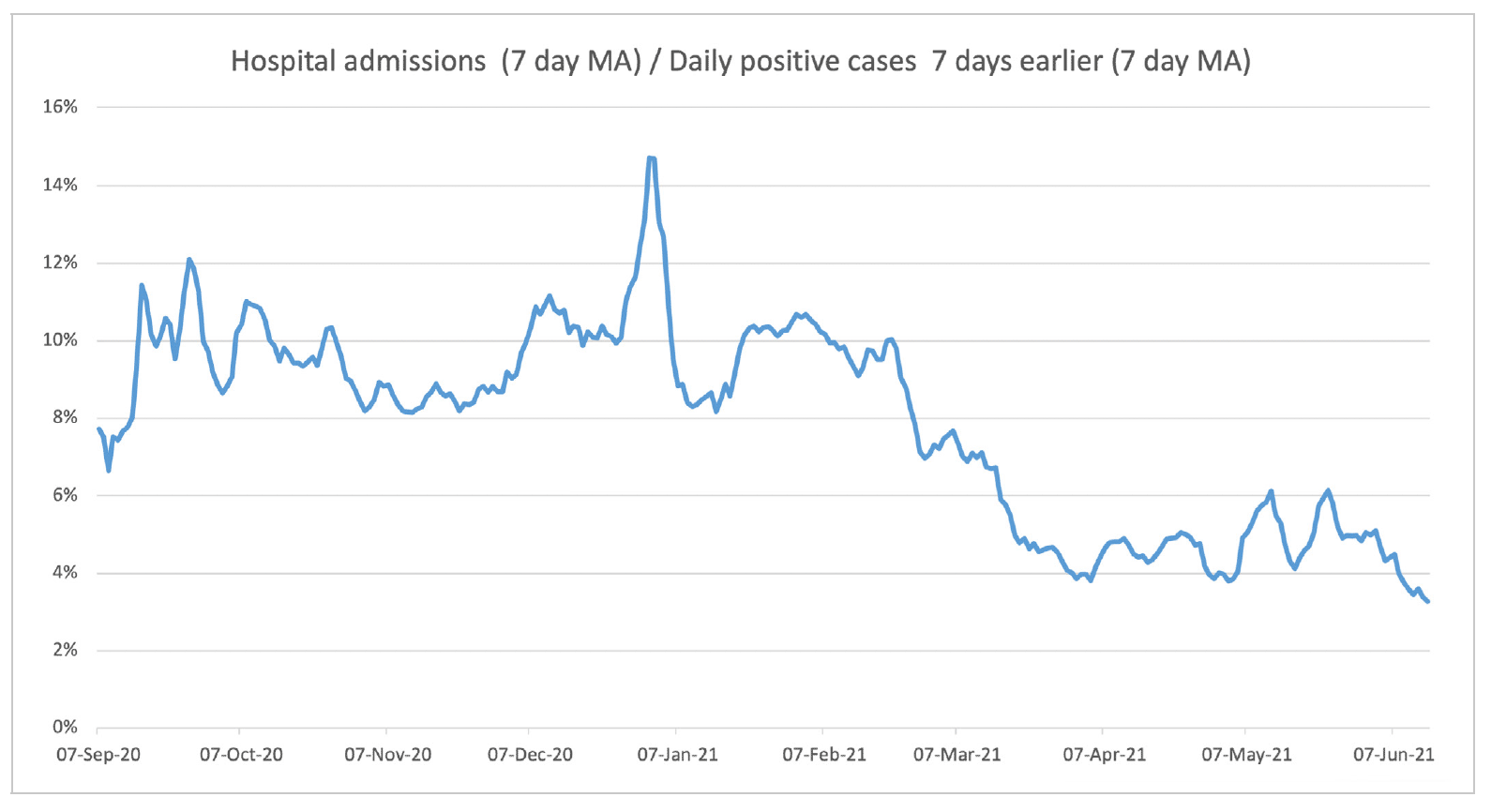Coronavirus (COVID-19): Scotland's Strategic Framework update - June 2021
Sets out how and why our COVID-19 response strategy will change in light of new conditions and what a move beyond Level 0 will look like.
The growing effectiveness of vaccination
Figure 6 below shows that, compared with the first peak in COVID-19 deaths, the early effects of the vaccination programme were beginning to reduce the proportion of deaths in older age-groups in the second peak. Combined with the success of protective measures in suppressing the second peak, this progress permitted us to consider the increased relaxation of restrictions in certain activities and settings, with important wide-ranging positive benefits for individuals, families and businesses.

By prioritising the most vulnerable groups, vaccination should significantly reduce COVID-19 morbidity and mortality, illustrated in Figure 7 below.

In part as a consequence of the vaccine's protection of older people (who have been prioritised), a higher proportion of new coronavirus cases are occurring among younger people who are less susceptible to severe COVID-19 disease. This is shown in the increase in the proportion of cases in younger people in the following two charts (from January and June 2021). The larger proportion of cases in the youngest age group may indicate a different pattern of infections caused by the Delta variant.

The evidence also indicates that there has been an important change in the relationship between infections and hospital admissions (which can be seen as a proxy for more serious COVID-19 disease). This change may still be continuing as shown in Figure 9:

As the chart above shows, the number of people being admitted to hospital with COVID-19 (with a 7 day lag after the specimen date for a positive case) has fallen as a percentage of reported cases during 2021 from around 10% in January 2021 to around 4% in June.
As well as a lower proportion of cases now resulting in hospitalisation, there is evidence that those who do require hospital care are, on average, discharged more quickly. The reduced length of stay, in combination with reduced rates of admission, is why hospital bed use in Scotland has increased more slowly during May 2021 than in comparable earlier growth phases of the epidemic where positive case numbers have risen quickly. The relationship between infections and hospital occupancy appears to have changed significantly since the start of 2021 but we continue to learn more about the impact of the Delta variant, which may change this relationship again.
Contact
Email: CEU@gov.scot
There is a problem
Thanks for your feedback